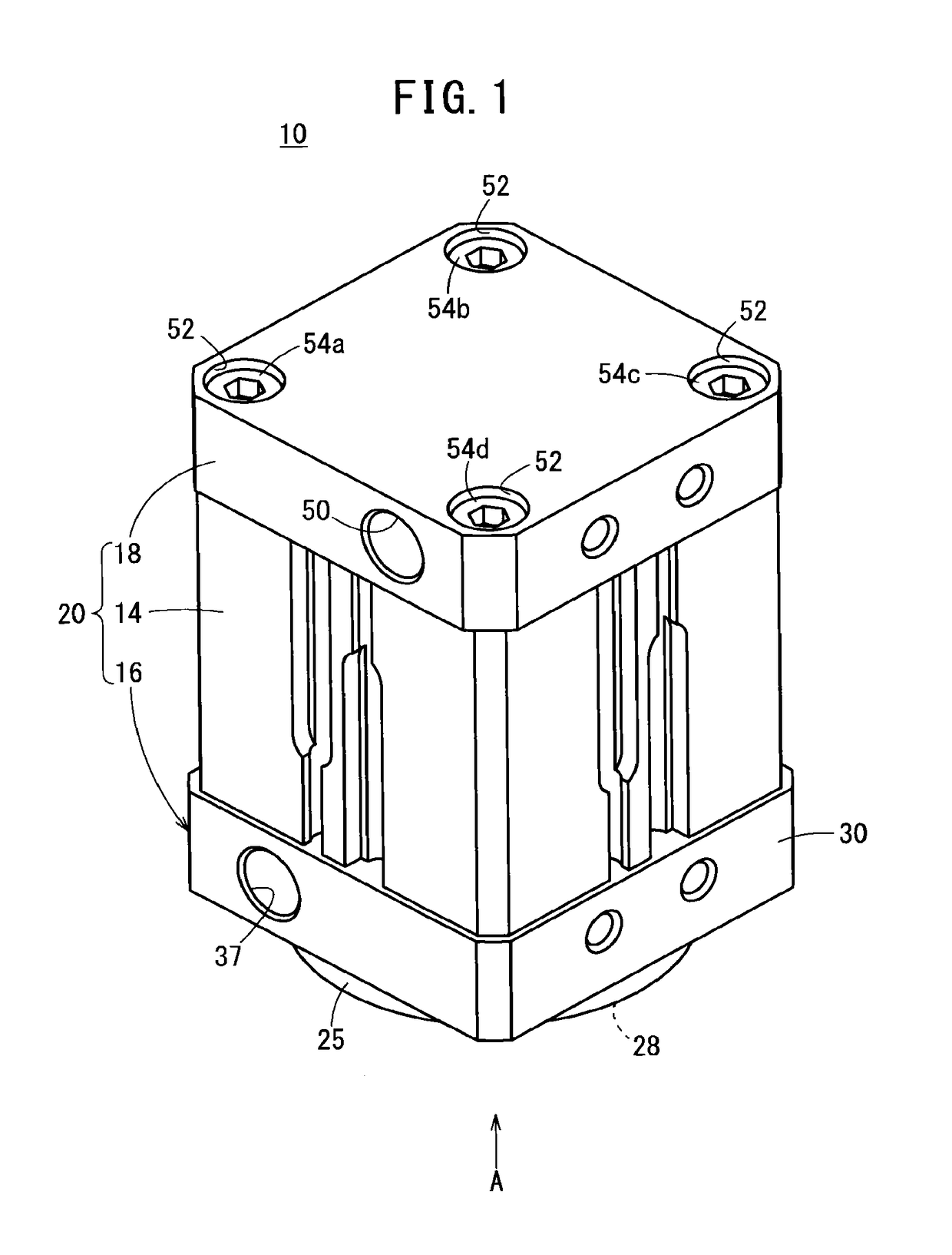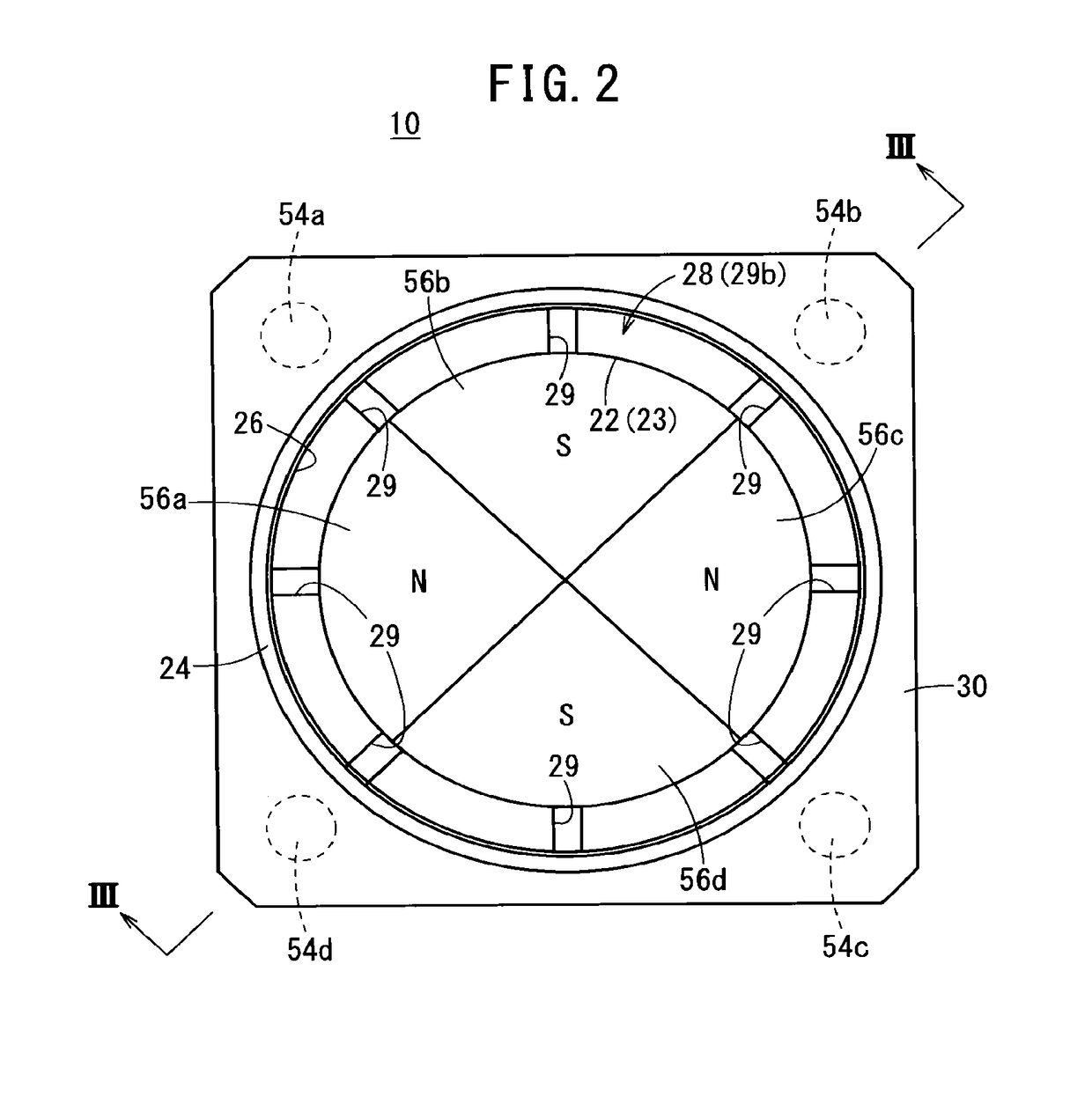Magnet chuck
a magnet chuck and chuck technology, applied in the field of magnet chucks, can solve the problems of not easy to produce such a large attracting force, and achieve the effects of reducing stress on the magnet chuck, preventing separation or falling off of the workpiece from the magnet chuck, and reducing vibrations of the magnet chuck
- Summary
- Abstract
- Description
- Claims
- Application Information
AI Technical Summary
Benefits of technology
Problems solved by technology
Method used
Image
Examples
Embodiment Construction
[0050]Preferred embodiments of a magnet chuck according to the present invention will be described in detail below with reference to the accompanying drawings. In the following description, the terms “up” and “down” correspond to the up and down directions in FIGS. 1, 3, and 4. Further, in the present embodiment, a case is exemplified in which compressed air is used as a working fluid.
[0051]FIGS. 1 through 3 are, respectively, an outline perspective view of essential components of a magnet chuck 10 according to an embodiment of the present invention, a plan view as seen from the direction of the arrow A in FIG. 1, and a cross-sectional view taken along line III-III of FIG. 2. The magnet chuck 10 attracts and retains a workpiece 12 shown in FIG. 3. Of course, the workpiece 12 is constituted from a ferromagnetic material, and as a detailed example thereof, a thin steel plate may be cited. A thickness T1 of the workpiece 12 is on the order of 0.5 to 2 mm, for example, and typically is ...
PUM
| Property | Measurement | Unit |
|---|---|---|
| thickness T1 | aaaaa | aaaaa |
| thickness T1 | aaaaa | aaaaa |
| central angle | aaaaa | aaaaa |
Abstract
Description
Claims
Application Information
 Login to View More
Login to View More - R&D
- Intellectual Property
- Life Sciences
- Materials
- Tech Scout
- Unparalleled Data Quality
- Higher Quality Content
- 60% Fewer Hallucinations
Browse by: Latest US Patents, China's latest patents, Technical Efficacy Thesaurus, Application Domain, Technology Topic, Popular Technical Reports.
© 2025 PatSnap. All rights reserved.Legal|Privacy policy|Modern Slavery Act Transparency Statement|Sitemap|About US| Contact US: help@patsnap.com



